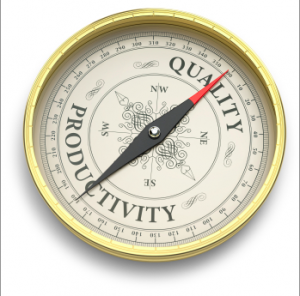Kowabunga! Moving Notice & Repost: Got Ideas? Collaborators & YOUR creative brilliance sought for Kowabunga!
Kowabunga! will be moving to www.ridingthewave.net very soon! As many subscribers were dropped by the previous subscription service, please resubscribe on the new site so you don't miss any posts!
In the meantime — we're still looking for your ideas for blog posts and interactivity, so here is a repost on our contest, below. Win Langdon Morris' great new book, The Innovation Master Plan or your own special interview on Kowabunga!
Dear readers, 
I hope that you have been gleaning some value and reading pleasure from this blog, as well as enjoying some of our fabulous photos! We're off to a good start exploring different facets of creative thinking and how to cultivate it in organizations, and I'm pleased to see that we have readers from around the world!
With your help, I’d like to "take it up a notch” soon and make Kowabunga! more a more interactive and creative forum. The timing of my invitation is appropriate, as my next post will be on collaboration!
You can either respond on the blog site comment section, or write me directly at adams at ridingthewave dot net.
- Please send me your ideas for posts, contests, interactivity, podcasts, interviews, videos… Whatever you can dream of…
- Let me know if you’d be interested in writing a guest post or collaborating with me on a post or related project.
Keep in mind that if you post your ideas in the comments section for everyone to see, those may inspire other people's ideas — That's the beauty of brainstorming, or "what iffing."
PRIZES! In return for those who provide the most and best ideas*, I'm offering some added incentive:
- One winner will receive Langdon Morris' new book, hot off the press and signed by the author: The Innovation Master Plan. You'll be invited to share a review, if you like.
- Another grand prize: We'll create a post or fun podcast featuring YOU and your creative and innovative work and/or related topic of your choice.
I would like to think that we've only just begun with what Kowabunga! can become, and that your support and creativity may play a role!
I look forward to hearing from you.
Best wishes,
Veronica Adams
Riding the Wave Training & Development
adams at ridingthewave dot net
* Disclaimer: The contest judges offer no objective criteria whatsoever for what will be deemed the "best" ideas. Just ones we think that we all might enjoy! 😉

Originally posted August 2011. Revised January 2018.
A colleague told me he hadn’t realized that when I talk about innovation I am often referring to improvements in processes, workflows, and efficiency, in addition to new product and service developments. So, let me set the record straight.
According to The Oxford American Dictionary, innovation is defined as: n. Change, alteration, revolution, upheaval, transformation, metamorphosis, breakthrough; new measures, new methods, modernization, creativity, ingenuity, inspiration….
Therefore, "change" and "new methods" can be something as modest as altering the steps in verifying data to ensure greater accuracy, or ordering a piece of equipment so that fewer people need to be involved. Minor “tweaks,” collectively, can be world changing. Toyota became the largest and “most efficient” car manufacturing company in the world not based on revolutionary, head-turning Tesla-like designs (although it has certainly has had breakthrough designs of its own). What Toyota has mastered is a whole other realm of innovation:
"… Small incremental innovations [have] snowballed over time into huge improvements in productivity, efficiency and output."
Improving Processes — Keeping it Simple in the Spirit of "Kaizen"
It is important not to conflate an openness and commitment to improving processes with adopting formal process improvement systems such as Lean and Six Sigma. A future blog post will provide a high-level overview Lean and Six Sigma, as well as Agile. In short (while there is some interrelationship between them) these are disciplined, multi-step methodologies for revealing and eliminating: a) waste in time, energy, and resources (Lean); b) inconsistencies in production quality (Six Sigma), and c) for speeding up development and leaning cycles (Agile). The latter, Agile, has been primarily used in software development, but many believe its use would improve the outcomes and efficiency of most projects.
There are times when these frameworks utilize creative thinking, and at others, the intense drive for speed and exact measurement can stifle it. In order to maximize the benefits of divergent thinking, depending on the stage of the cycle within any one of these methodologies, process leaders must hold fast to a commitment to balance, and ensure there is sufficient time for the creative ideation and reflection process.
Toyota has honed each of these systems to a high art. But they are viewed only as tools within their overarching approach called "Kaizen,” which is Japanese for “change for the better” or “continuous improvement.” Kaizen itself is not a specific tool, but rather, it is a mindset or value system, and a "journey."
 With the belief that everything can be improved and performed more efficiently, and that continuous improvement is everyone's business, just as the stand-out leaders in the IBM CEO study did, Toyota requests every one of its employees to help "identify problems and then develop and implement ideas to solve [them]." (My most recent information estimates all Toyota employees contribute an average of ten improvement suggestions per year, from line-workers, to administrative assistants.)
With the belief that everything can be improved and performed more efficiently, and that continuous improvement is everyone's business, just as the stand-out leaders in the IBM CEO study did, Toyota requests every one of its employees to help "identify problems and then develop and implement ideas to solve [them]." (My most recent information estimates all Toyota employees contribute an average of ten improvement suggestions per year, from line-workers, to administrative assistants.)
In the spirit of Kaizen, in this article, we are referring to improving processes in its simplest form. On any given day at our work, most of us have ideas pop into our heads for how things could be more efficient or effective. Innovation management expert Langdon Morris writes that “seeing things as they are and things as they could be” is the creative tension that is foundational to innovation.
Many American companies that have adopted Lean and Six Sigma tools have fallen short of achieving the results that their Japanese counterparts have. Some ascribe this to a failure to fully understand the art of kaizen and the balance between:
- Applying the rigorous systems of Six Sigma, and Lean
- With taking adequate time for divergent thinking and stepping back
- With drawing creative continuous improvement ideas from the ingenious rank-and-file humans who come to work for them every day.
Unless leaders put processes in place for employees to share their ideas, and then to vet them and experiment with those that may be viable, rhetoric aside, they are not creating innovative workplaces. The cost of not implementing these is a tremendous loss of brainpower, opportunities, and financial and human resources. Regardless of what great employee benefit programs are offered, their organizations' rates of dissatisfaction and turnover will be higher than had they engaged the talents of their employees in continuous improvement.
Other Forms of Innovation:
Now that we've explored the over-arching concept of process improvement, let's look at some other viewpoints. Brownell Langdrum of Draw Success (www.DrawSuccess.com) supplemented her own list of types of innovation with those generated by a group of chief innovation officers from companies such as Google, Mattel, and Hewlett-Packard. A few of these are included below; some overlap, and some "hairs might be getting split." But it's an interesting prompt for thinking through the various areas where we can take our questions and wonder if there might be better ways… (In looking at her full document, you will find that some of the descriptions are quite original themselves.)
Improvements in internal operations:
- Efficiency Innovation delivers ways to improve efficiency and the speed of effectiveness. It can include internal systems and processes or ways to expedite the customer/client experience.
- Financial Innovation conveys ways to increase sales, reduce costs, improve tracking of expenses, and reduce accounts receivable, along with other ways of managing finances to enhance profitability. It also includes ideas to improve tax/audit compliance.
- Process Innovation encompasses the implementation of a new or significantly improved production or delivery method.
- Systems Innovations includes introducing a new infrastructure or system, which could produce new sectors, and induce major change across several areas of business.
 And now for the Flashier forms of Innovation:
And now for the Flashier forms of Innovation:
- Breakthrough, disruptive or radical innovation: These involve launching entirely novel products or services. Breakthrough innovations are rare because of the risk and uncertainty, but they can deliver tremendous rewards. They require large leaps of thought and a high risk tolerance.
- Business Model Innovation involves changing the way business is done, whether in terms of sales and distribution, marketing, pricing or any other core business strategy.
- Incremental Innovation is when one adds something extra to a product or service that the competition doesn't have or isn't doing. Or, when one makes something last longer, makes it more convenient, or faster.
- Marketing Innovation involves development of new marketing methods with improvements in product design or packaging, product promotion, communication or advertising, pricing or distribution.
- Product Innovation is the introduction of a good or service that is new or substantially improved, which may include improvements in functional characteristics, technical abilities, ease of use, or any other dimension.
- Service Innovation: Compared to goods or product innovation or process innovation, service innovation delivers ways to improve the delivery of a service or expertise and is both interactive and information-intensive.
- Technological Innovation may include coming up with new technologies to solve a problem or new uses for existing technologies. Solutions may be high-tech (i.e. computer systems) or low-tech (a better mouse trap).
In summary, when hearing or using the term “innovation,” be aware that it often refers to simple improvements in workflows and processes. Creating environments that challenge all employees to help lead continuous improvement can result in organizational benefits that go far beyond what any one mind could ever have imagined.

I recently posted about the “Creative Geniuses” that are found throughout  organizations. Again, each of us carries creativity within us. Some of us may need coaxing in order for our creativity to reemerge. For all, a certain amount of support and structures are needed in order for our ideas to manifest.
organizations. Again, each of us carries creativity within us. Some of us may need coaxing in order for our creativity to reemerge. For all, a certain amount of support and structures are needed in order for our ideas to manifest.
In the recent "Leader as Conductor," post, I outlined some specific ways that managers can foster innovation in organizations. But in what capacities? In his terrific white paper, “Creating the Innovative Culture: Geniuses, Champions, & Leaders,” Langdon Morris of InnovationLabs outlines two other essential types of roles necessary to create an innovative culture: “Innovation Champions” and “Innovation Leaders.”
Innovation Champions: They support innovation by helping creative people overcome the obstacles that otherwise inevitably impede their innovation efforts.
Innovation Leaders: They define firms’ expectations and policies to favor innovation.
Working in partnership, these two distinct role models set the stage for creating the environment to grow, direct, and apply the creative genius within an organization. As Mr. Morris writes, “The genius of firms like Apple, Cisco, and Toyota… [is that] their leaders seem to have found a way to standardize the process of innovation.”
INNOVATION CHAMPIONS build the practical means for effective innovation by:
- “Finding creative thinkers and encouraging them [often through coaching and mentoring] to think and work in new ways” or to "seek new experiences that spark new ideas;“ and
- “They create a regular operations context in which sharing and developing new ideas is the norm.”
Champions might have any title in the organization, from that of senior manager to front line operations staff. Regardless of title, they “provide the bridge between the strategic directives of senior managers and the day-to-day focus of front line workers.”
“Hewlett Packard’s MBWA (mgt.-by-walking-around) was a great innovation champion technique for learning about innovation efforts and supporting them.”
Innovation champions “are usually persistent networkers… [who] know what’s going on many levels.” They know who has the skills, talents, and resources; who needs what; what’s not working, and what can be done to move the process forward.
In his best-seller book The Tipping Point, author Malcolm Gladwell outlines three roles he sees as key to the success of ideas taking hold in organizations. As Mr. Morris sees it, all three of these mantles are embodied in effective innovation champions:
- Mavens who have deep knowledge that they are keen to share.
- Salesmen who like to influence others to take action.
- Connectors who have strong relationships with many people.
Collaboration & Trust:
Champions forge collaboration and trust while also helping to develop infrastructures that support innovation. This includes creating environments that allow for the face-to-face partnering that is indispensable. “They build collaboration, and they build the trust upon which effective collaboration occurs. Innovation is a collaborative endeavor… There is little innovation without collaboration, and there is no collaboration without trust.”
 All the World's a Stage…
All the World's a Stage…
My undergraduate degree was in theater (Go, University of Detroit!). As one whose right brain is well developed and who naturally thinks in terms of connections and similarities, I'll share how I see the roles of champions and leaders in terms of the parts they would play in artistic productions, as in theater or film.
I envision the role of champions as similar to that of theater or film directors. Collaboratively honing the production vision, they take the various tools and perimeters; the scripts and story-lines; the stage/sets, budgets, and timelines given to them by the producers; the talents, experience, strengths, weaknesses, and personalities of the actors, design and crews — and they orchestrate all of these.
Sometimes, depending on the size and budget of the production, the role of director is shared and divided among various people who serve as executive director, art director, assistant director, etc. Similarly, there is (or should be) more than one champion within an organization.
Champions and directors work with "the talent" to create a shared, organic vision and then to manifest it. While keeping their focus on the progress of the various production teams, they also work closely with the individuals. They coach the actors to explore and hone their roles and to interact in the most effective ways with the other cast members. They work similarly with the design and set crews.
Key to the success of many directors is that they develop trusting relationships with the various individual artists in order to bring out the best in their talents, while building the collaboration and high trust that is needed for great ensemble productions and (what is called in the non-theater world) high-functioning teams.
Enter the other indispensable player…
INNOVATION LEADERS influence the core structures and the basic operations of an organization in order to support innovation. Such core structures include:
- The design of the organization
- Policies and underlying principles – “The Rules of the Game”
- Metrics and rewards.
In keeping with my theater arts metaphor, I think of innovation leaders as the "producers." Without a producer’s backing, there will be no show. Producers don't have to be particularly creative themselves, and they don't need to be involved in a hands-on manner. Nonetheless, they either "set the stage," or else they sabotage the production by the resources they provide (or fail to) and the perimeters they establish. Some leaders are creative themselves and will be involved artistically, just as some producers are. (Examples of top leaders with a hands-on approach: Immelt at GE and Iger at Disney, who has helped to design games himself.)
Given that innovation needs to be treated as a strategic concern, “innovation leaders are typically, though not exclusively, senior managers” who have the authority to make key decisions, related to questions such as:
- Do budgets include a line item such as “investment in innovation”?
- Are there seed funds to invest in promising new ideas, or teams of people to manage ideas that do not fit inside existing business units?
— If not, then innovation isn’t likely to happen.
In his book, Permanent Innovation, Mr. Morris asserts, “There is no innovation without leadership… Top managers can be powerful champions of innovation, or dark clouds of suppression…. They [need to] work diligently to eliminate the many obstacles that otherwise impede or even crush both creativity and innovation.”
In closing, dear audience…
Hat’s off to those Champions and Leaders who orchestrate creative genius and make the great innovations that move us all forward possible!

(Blog author, on another stage, long ago… )
Click on the link to download a free copy of Langdon Morris' excellent book: Permanent Innovation: The Essential Guide to the Strategies, Principles, and Practices of Successful Innovators
And for his white paper: "Creating the Innovative Culture: Geniuses, Champions, & Leaders"

 With the belief that everything can be improved and performed more efficiently, and that continuous improvement is everyone's business, just as the stand-out leaders in the IBM CEO study did, Toyota requests every one of its employees to help "identify problems and then develop and implement ideas to solve [them]." (My most recent information estimates all Toyota employees contribute an average of ten improvement suggestions per year, from line-workers, to administrative assistants.)
With the belief that everything can be improved and performed more efficiently, and that continuous improvement is everyone's business, just as the stand-out leaders in the IBM CEO study did, Toyota requests every one of its employees to help "identify problems and then develop and implement ideas to solve [them]." (My most recent information estimates all Toyota employees contribute an average of ten improvement suggestions per year, from line-workers, to administrative assistants.)
 And now for the Flashier forms of Innovation:
And now for the Flashier forms of Innovation:

